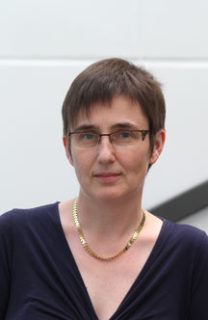3D printing using electron beams
Materials scientist at FAU receives ERC Advanced Grant worth three million euros
Prof. Dr. Carolin Körner, Chair of Materials Science and Engineering for Metals at Friedrich-Alexander-Universität Erlangen-Nürnberg (FAU) has been awarded an ERC Advanced Grant, which is not only extraordinary funding, but also recognition of Erlangen and Nuremberg as an exceptional location for science and research. The EU has granted 3 million euros in funding to support research in additive manufacturing of high-performance components using high-energy electron beams.
Additive manufacturing (AM), better known as 3D printing, is increasingly becoming a key technology in industry. Until now, the process has been used predominantly for manufacturing prototypes and small batches. Typically, AM uses a computer-operated laser beam to create three dimensional workpieces layer by layer from liquid plastics or metal powders, usually based on hardening or melting processes. ‘The laser method is the method of choice for most applications, but it has some critical disadvantages,’ says Carolin Körner. ‘It is very hard to monitor manufacturing quality during production and certain high-performance alloys cannot be processed at all.’
Electron beam for super alloys
Carolin Körner has been researching alternative methods for producing high-performance metal alloys. Instead of laser beams, she uses high-energy electron beams, like those commonly used in scanning electron microscopy. The basis for the material is a bed of metal powder consisting, for example, of nickel-based or titanium alloys. The major advantage over laser technology is that the electron beam can move freely in the vacuum at speeds of up to 10000 metres per second, allowing it to be directed much more flexibly than a laser. It functions as a source of heat, a tool and an analysis device all rolled into one.
Electron beam-based AM allows voxel-based material design, in other words the highly precise tuning of local material properties, with the term voxel derived from pixel-based resolution of 2D images. This process makes it possible for various areas within a component to be given different properties. ‘Picture the blade of a gas turbine,’ explains Körner, ‘the base must be extremely ductile and resistant to cracks, whilst the blade itself must be extremely hard and temperature-resistant.’ Different material properties like these can, for example, be attained by deliberately vaporising certain elements of the alloy or by carefully controlling and setting the required crystal structure.
A prerequisite for voxel-based material design is that local thermal conditions are monitored closely at all times. This is where the main advantage of the process comes into its own: a real-time analysis analogous to a scanning electron microscope that monitors each stage in the manufacturing process meticulously. The electron probe does not only deliver information on the highly dynamic manufacturing process and the quality of the components, it also reports back on local material composition, even in the deepest layers.
Contribution to sustainable mobility and energy supply
The project ‘Voxel Based Material Design: Amalgamation of Additive Manufacturing and Scanning Electron Microscopy’, AMELI for short, hopes to open up pioneering new possibilities for component manufacturing. ‘The groundbreaking combination of locally adjustable material properties and freedom of construction shifts the limitations of components made from high-performance alloys,’ explains Carolin Körner. As a result, additive manufacturing is becoming increasingly interesting for the aviation industry, and may also be able to contribute to increasing the effectiveness of land-based gas turbines or accelerating the expansion of hydrogen production facilities. ‘AMELI will contribute to sustainable energy supply and mobility in the future.
The ERC funding is available for both personnel and equipment costs. Over the next five years, four doctoral research positions will be financed within the context of the AMELI project. The Chair will also receive a new centrepiece for continued research into electron beam-based AM: an instrument with flexible acceleration voltage of up to 150 kilovolts and advanced sensors. ‘With considerably higher electron energy and improved sensors, we will be able to look into the material at an even greater depth,’ explains Carolin Körner. ‘This will allow us to obtain valuable additional information about the local material properties of components, which will allow us in turn to refine our process even further.’
About Professor Körner
Prof. Dr. Carolin Körner has held the Chair of Materials Science and Engineering for Metals at FAU since 2011. In 2015 she was appointed lead researcher for primary shaping – metals at NMF GmbH, a research company belonging to the Free State of Bavaria. She is also a member of the directorial board at the Institute of Advanced Materials and Processes (ZMP) in Fürth, where she is in charge of the electron beam-based additive manufacturing group. Since 2018, she has been the coordinator and speaker for Erlangen in the joint national research centre CRC-TR 103 ‘From Atom to Turbine Blade – Scientific Foundations for a New Generation of Single-Crystal Superalloys.’ Carolin Körner is a member of the Federal Institute for Materials Research and spokesperson of the Bavarian state government’s committee of experts for ‘Additive Manufacturing’. She received the teaching award from the Faculty of Engineering at FAU in 2018 for outstanding commitment to university-level teaching.
Further information:
Prof. Dr. Carolin Körner
Chair of Materials Science and Engineering for Metals
carolin.koerner@fau.de
